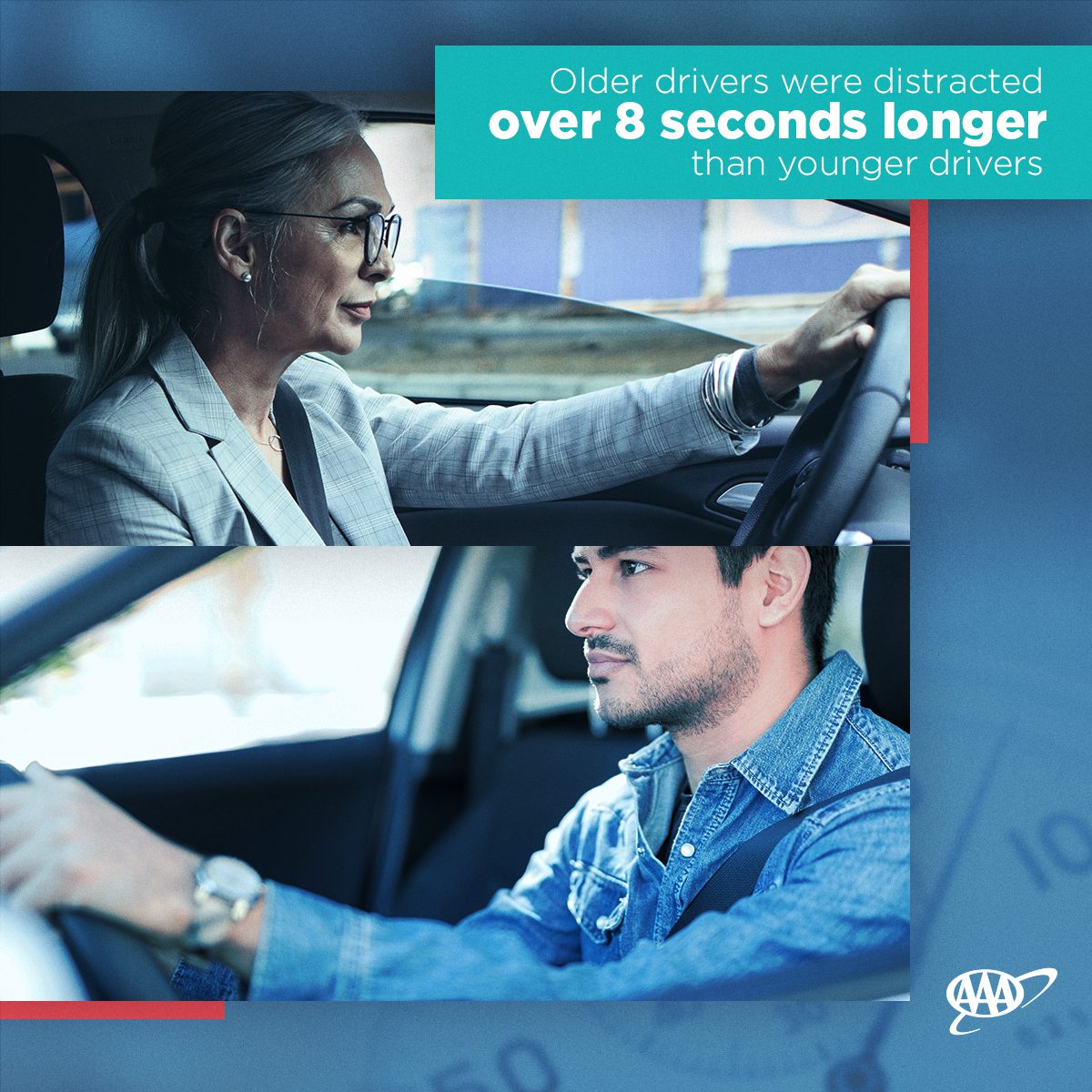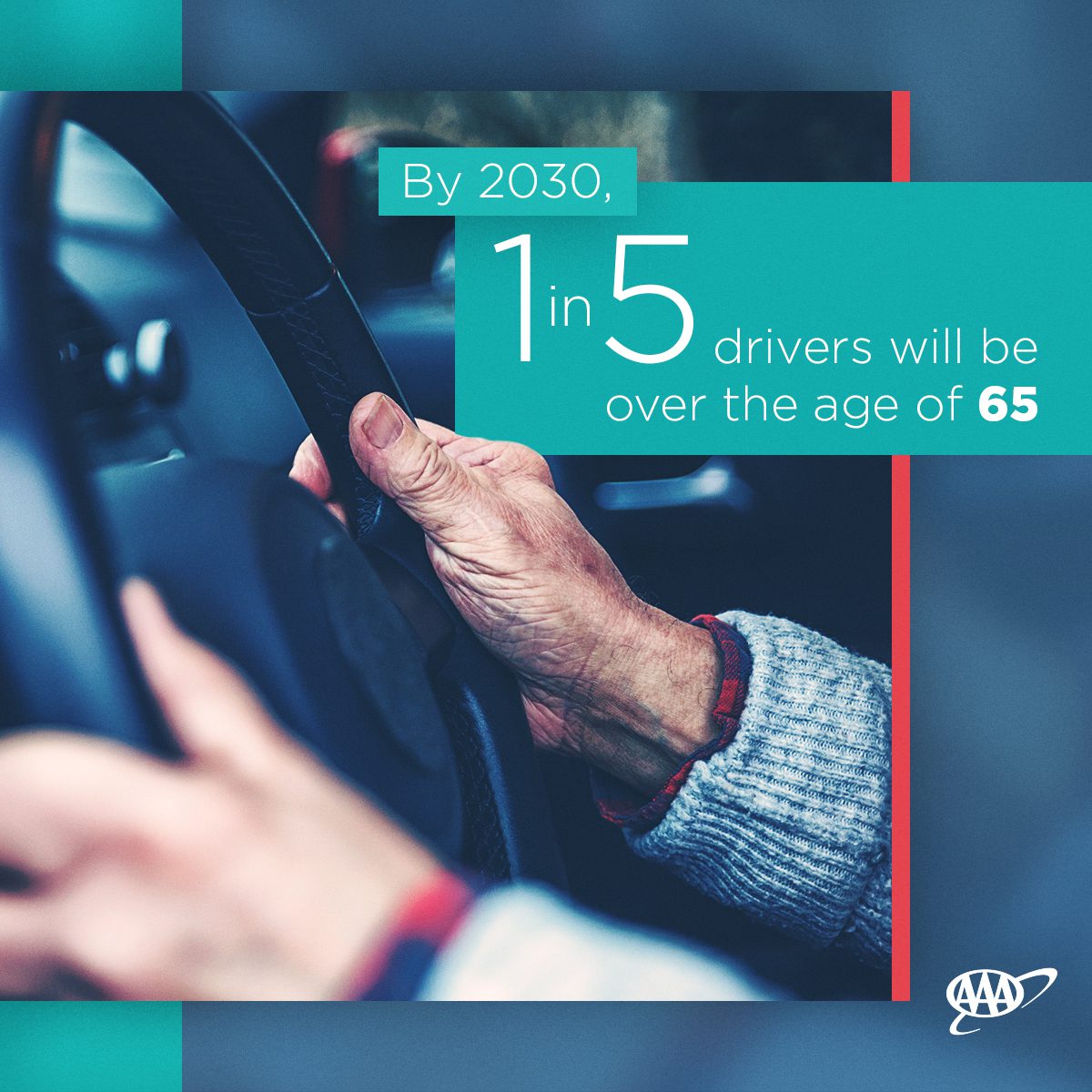Developing better tech for seniors could improve in-vehicle systems for all users
PORTLAND, Ore., – New in-vehicle infotainment technology has the potential to increase comfort and extend mobility for older drivers, but first it has to stop distracting them. New research from the AAA Foundation for Traffic Safety shows that on average, older drivers (ages 55-75) took their eyes off the road more than eight seconds longer than younger drivers (ages 21-36) when performing simple tasks like programming navigation or tuning the radio using in-vehicle infotainment technology. Taking your eyes off the road for just two seconds doubles a driver’s risk of a crash.
Here are B-roll video, fact sheet and complete report.
“Voice-command functions found in new in-vehicle technology are intended to help drivers by keeping their eyes and attention on the road,” said Dr. David Yang, Executive Director of the AAA Foundation for Traffic Safety. “Unfortunately, the complexity and poor design of some of these systems could cause more harm for older drivers, in particular, instead of helping them.”
Seniors are the fastest growing demographic in the U.S. By 2030, more than one in five drivers on the road will be over the age of 65. “Designing in-vehicle technology that’s easier for seniors to use will improve their comfort and mobility, and may hold the key to enhancing the safe use of this technology for all drivers,” says Marie Dodds, public affairs director for AAA Oregon/Idaho.
The AAA Foundation for Traffic Safety partnered with researchers from the University of Utah to test the visual and cognitive demand created by the infotainment systems in six 2018 vehicles. Study participants in two age groups (21-36 and 55-75) were required to use voice commands, touch screens and other interactive technologies to make a call, send a text message, tune the radio, or program navigation, all while driving.
Vehicles used in the study were:
- 2018 Audi A6 Premium – High demand
- 2018 Cadillac CT6 – High demand
- 2018 Lincoln Navigator – Moderate demand
- 2018 Mazda CX-5 – Very high demand
- 2018 Nissan Pathfinder SI – Very high demand
- 2018 Volvo XC9 – High demand
Similar to previous AAA research, none of the six vehicle infotainment systems produced low demand, while five systems generated high or very high levels of demand on drivers. Researchers found that the technology created potentially unsafe distractions for all drivers, though this safety risk is more pronounced for older adults, who took longer (4.7-8.6 seconds) to complete tasks, experienced slower response times, and increased visual distractions.
Completion Time by Task Type
| Age of Driver | Audio Entertainment | Calling and Dialing | Text Messaging | Navigation Entry |
| Younger (21-36 years) | 18.0 sec | 17.7 sec | 27.7 sec | 31.4 sec |
| Older (55-75 years) | 25.4 sec | 22.4 sec | 33.8 sec | 40.0 sec |
The complex design of the technology created increased visual and cognitive demand for older drivers. For example, some systems included multiple menus and cumbersome voice command functions that significantly reduced older drivers’ ability to easily complete seemingly simple tasks.
Specific design changes to in-vehicle infotainment systems, such as improving voice-command technology, simplifying software menus, removing complex center console controls, and positioning system controls to allow drivers to keep their eyes on the road, would better meet the needs of older adults and make the systems safer for all drivers.
“This is more of a design problem than an age problem. Designing systems that are easier for older drivers to use would benefit all drivers,” adds Dodds.
Personal assessments about distraction caused by in-vehicle technologies are not always accurate. For example, in some cases drivers reported the use of the systems as less demanding even though researchers measured higher levels of demand or longer task completion times.
Whether you purchase a new vehicle, or rent or borrow one while traveling, AAA recommends that all drivers, especially older drivers, keep the following tips in mind:
- Avoid interacting with in-vehicle infotainment technology while driving except for legitimate emergencies.
- Practice using the voice command and touch screen functions when not driving so you know how to use it in case of emergency.
- Avoid vehicles that require use of a center console controller when using the infotainment system. These kinds of systems are especially distracting, and potentially dangerous.
A total of 128 drivers ages 21-36 and 55-75 participated in the study of six 2018 model-year vehicles. The latest report is the seventh phase of distraction research from the AAA Foundation for Traffic Safety. Visit AAA.com/distraction to learn more.
About AAA Foundation for Traffic Safety: Established in 1947 by AAA, the AAA Foundation for Traffic Safety is a nonprofit, publicly funded, 501(c)(3) charitable research and educational organization. The AAA Foundation’s mission is to prevent traffic deaths and injuries by conducting research into their causes and by educating the public about strategies to prevent crashes and reduce injuries when they do occur. This research is used to develop educational materials for drivers, pedestrians, bicyclists and other road users. Visit www.AAAFoundation.org.
About AAA: AAA provides more than 59 million members with automotive, travel, insurance and financial services through its federation of 34 motor clubs and nearly 1,100 branch offices across North America. Since 1902, the not-for-profit, fully tax-paying AAA has been a leader and advocate for safe mobility. Drivers can request roadside assistance, identify nearby gas prices, locate discounts, book a hotel or map a route via the AAA Mobile app. To join, visit AAA.com.
AAA news releases, high resolution images, broadcast-quality video, fact sheets and podcasts are available on the AAA NewsRoom at NewsRoom.AAA.com.
Find local news releases at https://www.oregon.aaa.com/category/news-releases/



